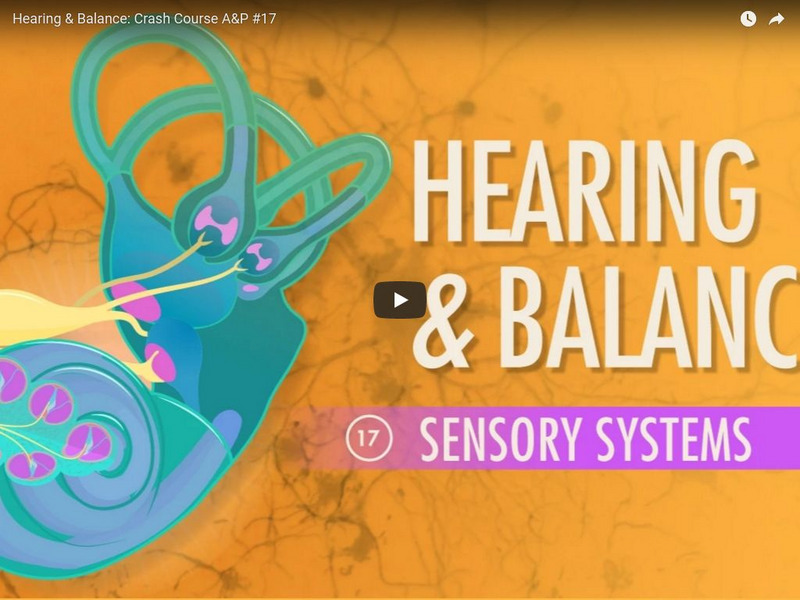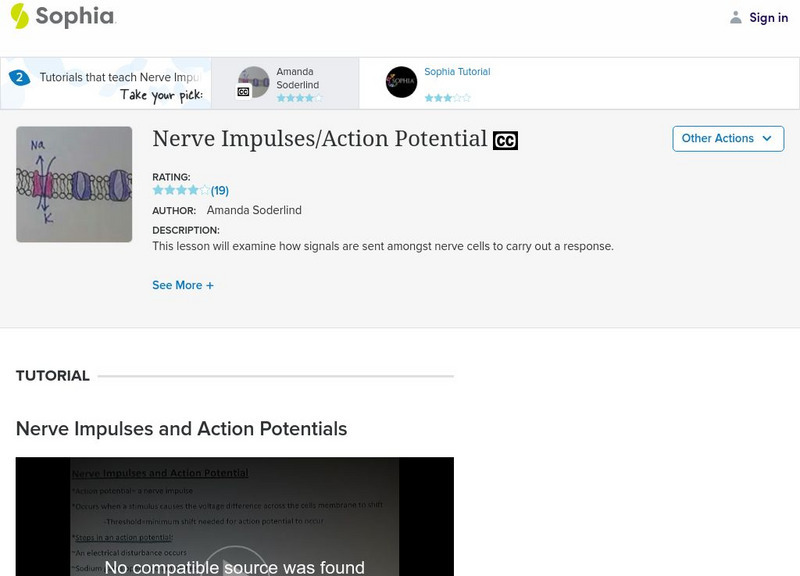Catalyst University
The Cardiac Conduction System
In this video, we discuss the components of and functions of the electrical conduction system of the heart.
Curated Video
How Do Neurons Work?
Neurons send signals through a mechanism called action potential. Action potentials are electrical signals that pass through the neuron’s axon. This causes the neuron to pass the signal to the next neuron. Action potentials are the...
Catalyst University
Events of the Neuron Action Potential
The graded potentials in the cell body and dendrites have summed to yield an action potential at the axon hillock. Here, we discuss the events of the action potential as its traverses along the axon.
Neuro Transmissions
What is Action Potential?
Ready for action? Time to get your neurons firing with some action potential. If you thought resting potential was tough to understand, it seems like action potential is that much more difficult. However, thanks to Alie Astrocyte, we...
Catalyst University
Graded Potentials, EPSPs, IPSPs, & Summation
In this video, we will discuss the purpose of graded potentials, EPSPs, and IPSPs; and how the summation of all graded potentials by the soma dictates whether an action potential occurs.
Professor Dave Explains
Neuronal Pools and Neural Processing
Ok, so we now have a pretty solid understanding of neuronal structure, as well as the action potential and synapses, so we understand how information gets from one neuron to the next. But that's just the tip of the iceberg. How are...
Neuro Transmissions
What is a Synapse?
Oh synapse! Time to connect the dotsÄI mean neurons. Each neuron is separated from its neighbors, so how exactly does a message get passed from one neuron to the next? Through the synapse, of course! Take a closer look at the basic...
Professor Dave Explains
The Mechanism of Muscle Contraction: Sarcomeres, Action Potential, and the Neuromuscular Junction
We've learned about the types of muscle, including skeletal muscle, and we know then when these muscles contract, we are able to move our bodies around. But how exactly does this happen on the molecular level? There is an astonishing...
Curated OER
Nervous Systems
Explore the nervous system's workings by first looking at the brain and its two hemispheres. Using the example of a split-brain surgery done for epilepsy, the function of language and vision is shown with an interactive component. Paul...
Khan Academy
Sodium-Potassium Pump, Cells, MCAT
Building upon the previous video about structure, this resource lays the building blocks for generating an action potential and transmitting a signal from dendrites through the axon. The topics are pretty detailed. Salman Khan also talks...
Khan Academy
Khan Academy: Biology: Electrotonic and Action Potentials
The foundation for understanding how neurons transmit signals. [18:53]
Sophia Learning
Sophia: Neurons Communication Action Potential
This lesson will describe the process of neuronal communication as neural impulses generated and transmitted from one neuron to another.
Sophia Learning
Sophia: Muscle Contractions: Micro Level: Lesson 1
This lesson will go into more detail describing how a muscle contracts. It is 1 of 4 in the series titled "Muscle Contractions: Micro Level."
Crash Course
Crash Course A&p #26: The Heart, Part 2 Heart Throbs
Today we're talking the heart and heart throbs -- both literal and those of the televised variety. Hank explains how your heart's pacemaker cells use leaky membranes to generate their own action potentials, and how the resulting...
Crash Course
Crash Course A&p #17: Sensory Systems: Hearing and Balance
Crash Course A&P continues the journey through sensory systems with a look at how your sense of hearing works. We follow sounds as they work their way into the ear where they are registered and transformed into action potentials....
Crash Course
Crash Course A&p #16: Taste and Smell
Hank resists the urge to devour a slice of pizza so that he can walk you through the way we experience our major special senses. It all boils down to one thing: sensory cells translating chemical, electromagnetic, and mechanical stimuli...
Crash Course
Crash Course A&p #9: The Nervous System, Part 2 Action! Potential!
What do you and a sack of batteries have in common? Today, Hank explains. [11:43]
Sophia Learning
Sophia: Nerve Impulses/action Potential: Lesson 1
This lesson will examine how signals are sent amongst nerve cells to carry out a response. It is 1 of 3 in the series titled "Nerve Impulses/Action Potential."










